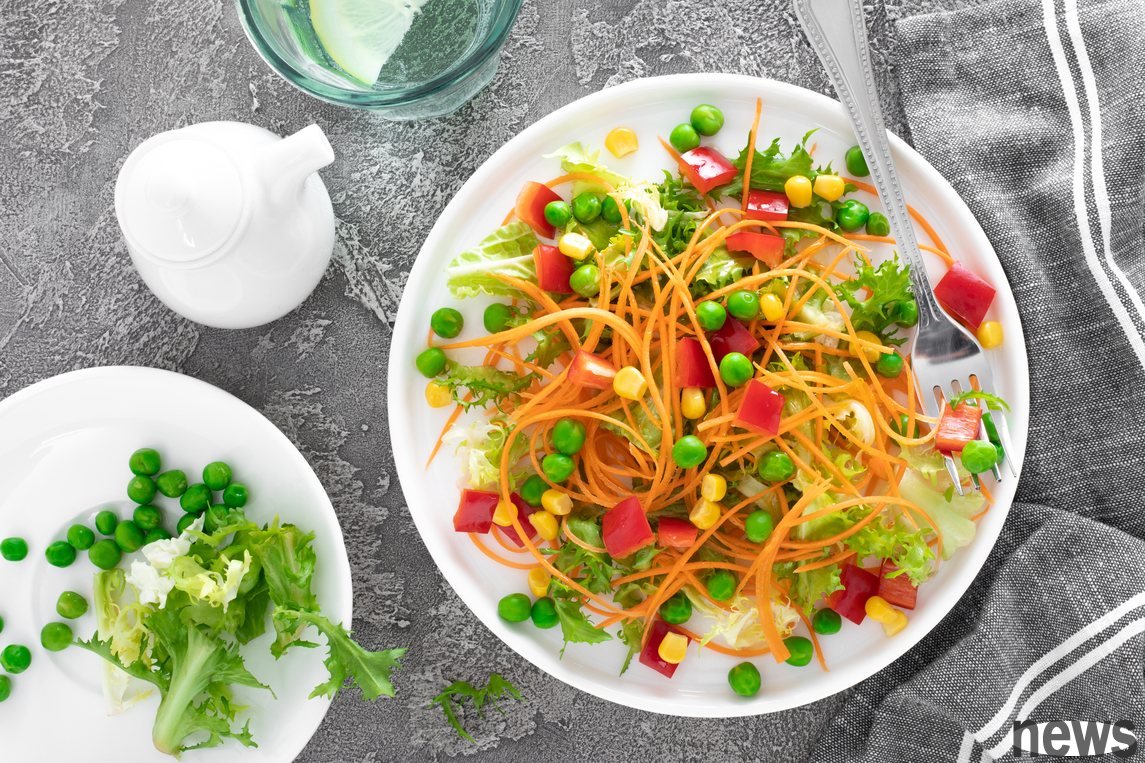
Vegetables are commonly known to be beneficial to the kidneys, but when you choose to eat a lot of raw vegetables, is this way of eating really helpful to the kidneys? Will it cause stomach discomfort? Experts say the actual answer is not absolutely correct, but depends on personal quality and trajectory status.
The three major benefits of eating raw vegetablesEating raw vegetables retains more heat-sensitive nutrients, and is a good way to obtain natural nutrition:
{9999}{9999}{9999}{9999}{9999} 1. Vitamins, minerals and phytochemicals are rich in vitamin C, leaf acid, fermentation and other trace nutrients, as well as strong antioxidant phytochemicals, which help reduce kidney inflammation and improve overall immunity. 2. Provide dietary fiber to promote peristalsisDietary fiber can be fermented by tract beneficial bacteria, producing short-link fatty acids (SCFAs), which help protect the tract mucosa, improve the tract bacteria phase, and improve defecation efficiency and prevent constipation.
3. A high foot feeling helps control the food consumptionRaw vegetables have low heat, large body volume, and are rich in fiber and moisture, which helps prolong the foot feeling, and naturally reduces the use of excessive processed food, which has a positive impact on maintaining kidney health and weight management.
What are the potential risks of eating raw vegetables?Although the benefits are obvious, eating large amounts of raw vegetables may bring challenges indigestion or nutrient absorption to some people.
1. For some people who have weak digestive function or suffer from irritability (IBS), the rough fibers of raw vegetables (such as fibers) are difficult to break down, which increases kidney tract burden, which may cause symptoms such as abdominal distension, gastrointestinal, constipation, etc. 2. Vegetables with high FODMAPs may induce symptomsSome vegetables contain FODMAPs (fermentable carbohydrates), which are rapidly fermented by bacteria in the kidneys, producing gas and permeability.
Commonly known raw vegetables with high FODMAP include: cauliflower, glutinous vegetables, garlic, kale, etc. These vegetables are particularly prone to irritability and inappropriate for patients with dysentery.
3. Large food volume increases the pressure on the kidneysRaw vegetables are not softened by cooking, and are larger and more difficult to chew and digest. Especially when taking large quantities of "high-capacity" vegetables such as salads, it may cause kidney tract gas and incompatibility.
4. Certain lettuce will affect the absorption of mineralsDeep green leaf vegetables such as spinach and beet leaves are rich in oxalic acid, which will combine with calcium to form oxalic acid calcium, reducing the absorption rate of calcium, which is not good for those with calcium risk.
Will cooking vegetables lead to nutrient loss?Some vitamins such as vitamin C and leaf acid are partially lost during high temperature cooking, but at the same time, it may also increase the absorption rate of certain nutrients, such as:
. β-Hushu (Hushu). Sophora (Tomato)
In addition, the cooking process can be:
. Soften the fiber and reduce gastric stimulation. Decompose some FODMAPs to reduce gas risk
According to research, the nutritional preservation degree of different vegetables will vary depending on the cooking method:
. Steaming and microwave: relatively less nutrient loss. Boiled in water: some minerals and vitamins will dissolve
. Baking: Good flavor and sometimes even thicken the nutrient density. Experts recommend using steaming, stir-frying, roasting and other warming methods, and paired with healthy fats, such as olive oil, to promote the absorption of fat-soluble vitamins (A, D, E, K).
How to eat vegetables to ensure both nutrition and kidney comfort?Whether it is raw or cooked food, the focus is on correct methods and balanced access. The following are practical strategies suggested by experts:
1. Increase the amount of vegetables in sequenceto increase the time of the tract to avoid excessive amounts at one time causing abdominal distension.
2. Raw and cooked food mix and make more nutritiousFor example, add roasted bell peppers, roasted crusts to the lettuce salad, or cooked spinach with fresh tomato slices.
3. Made into thick soup, paste or sauceand beat into vegetable soup, dip in sauce or mix it with fruit shake, not only retains nutrients, but also makes it easier to absorb and not irritate the stomach.
4. Avoid unsuitable types of vegetables that are prone to inappropriateIf you have a history of tract sensitivity, it is recommended to avoid high FODMAP vegetables and choose low FODMAP options such as cucumber, red bell pepper, tomato, etc.